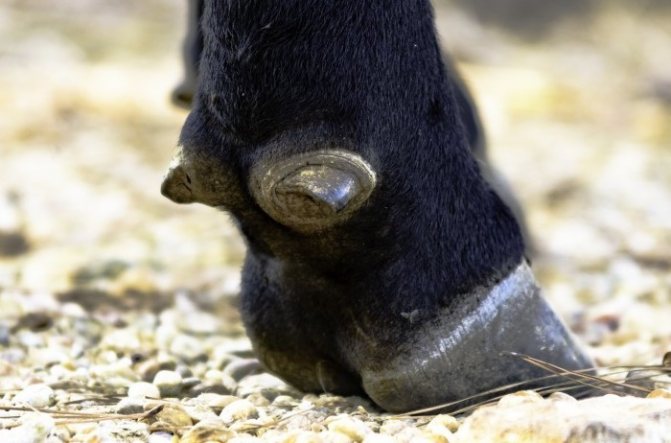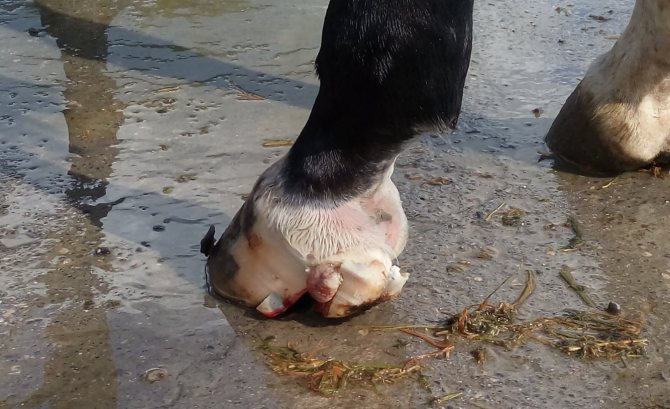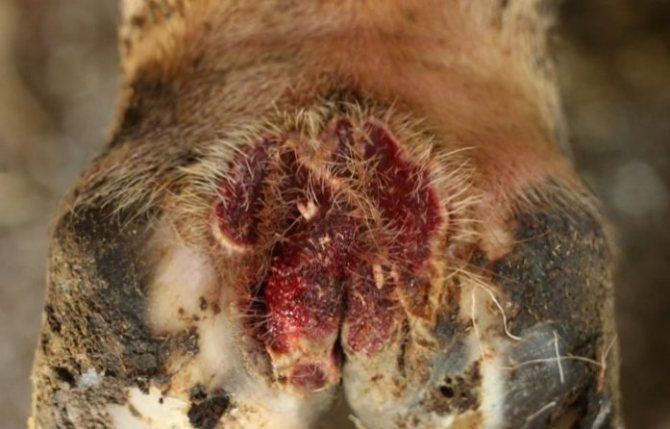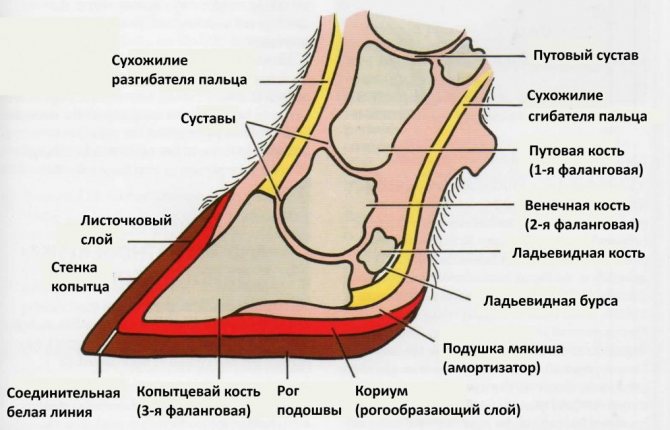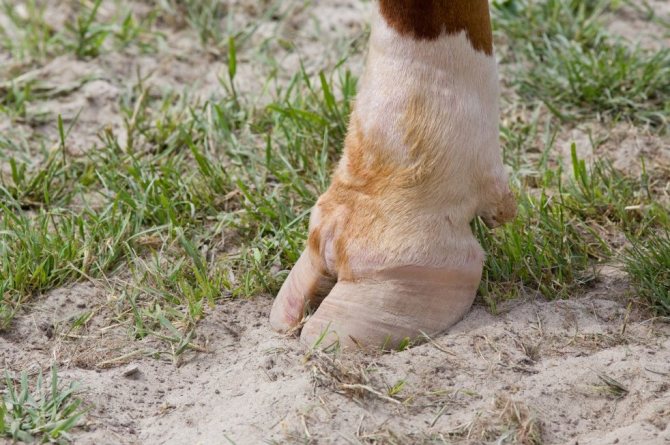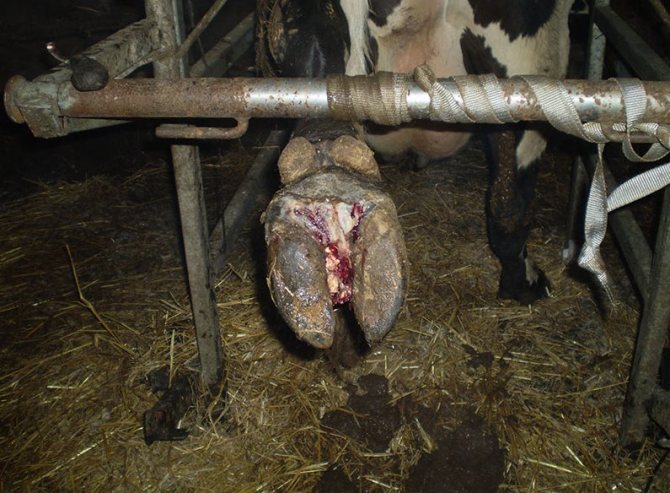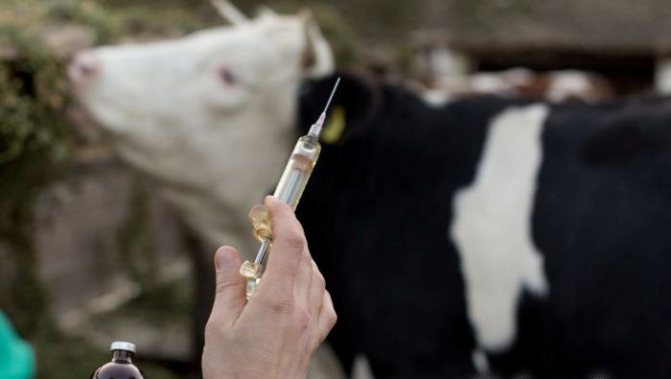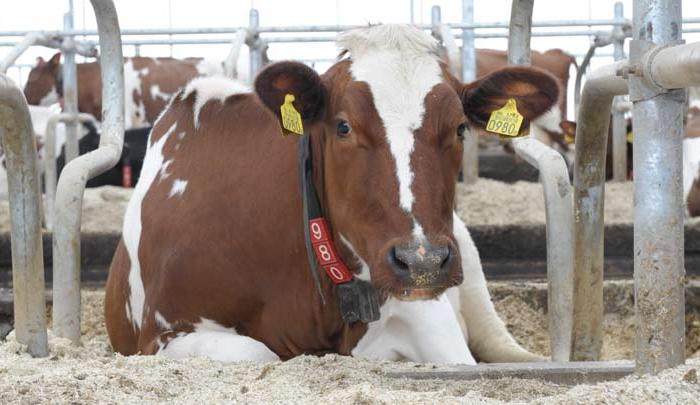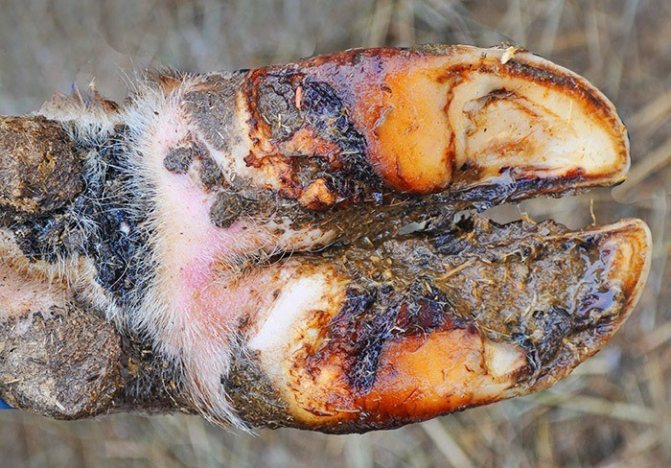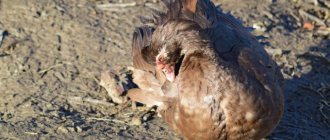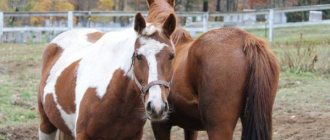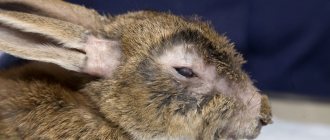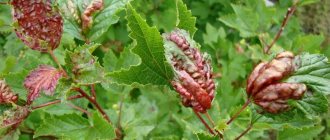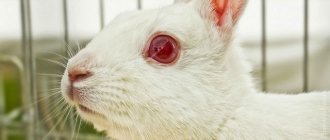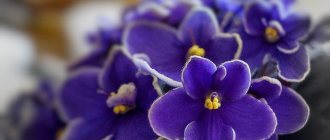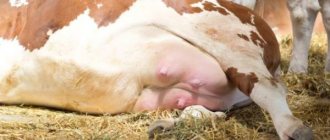In this article, you will learn:
- What are the causes of hoof disease in cows?
- What are the main diseases of the hooves in cows and what is their treatment
- How to Prevent Hoof Disease in Cows
Have you ever wondered if a cow's ability to eat enough food depends on the health of her hooves? Both in pasture and in stall housing, cow hooves experience increased stress, since the animal spends a lot of time standing up while consuming feed.
Low milk yield and poor productivity of cattle are often the result of various diseases of the limbs, because in the presence of such, animals cannot receive a sufficient amount of nutrients. In our article we will talk about diseases of the hooves in cows, consider the causes of their occurrence, the main types and analyze the methods of dealing with this disease.
Causes of hoof disease in cows

Cows spend most of their lives on their feet, and a rather large weight puts pressure on their hooves every day. Lack of attention to the hooves of horned animals can lead to tissue infection and the development of inflammatory processes.
Let's dwell a little more on the structure of the hoof: it consists of two halves with a lobe in the middle. The hoof is covered with horny tissue, which is renewed throughout life. In the summer, the horn grinds off on its own, and in cold weather the process of regeneration of the horny tissue slows down, in this regard, the hoof requires trimming.
What are the main causes of hoof disease in cows? If earlier diseases of the limbs of large horned animals were considered the consequences of damage or conspiracy, then modern veterinary medicine has found out a number of natural reasons for their occurrence and development.
These include:
- decreased immunity;
- violations of sanitary conditions of detention;
- lack of due attention to the appearance of animals;
- unbalanced or inadequate feeding;
- walking of cows on stones and hard surfaces for a long time.
It is worth noting that the legs of young animals are especially susceptible to damage and various infections, so they should be examined at least 2-3 times a week.
Only timely detection and treatment of hoof diseases in cows will avoid a decrease in productivity and a decrease in milk yield. Remember that you can not only incur losses due to a decrease in productivity, but also lose a whole herd, because when an animal's legs completely fail, it has to be sent to slaughter.
Erosion
In case of erosion, the stratum corneum on the hoof stops growing.
Signs
The hoof is in two parts of the same size. With erosion, the halves grow disproportionately. Such a pathology disrupts the walking of the animal, and the cow distributes its weight incorrectly to the limbs. Because of this, soft tissues will begin to rot.
In pups, the disease is more difficult. The pain is so intense that the calf falls to its feet. Not every farmer will identify a disease.
Treatment
Veterinarians offer only one way to control erosion. A special horseshoe is attached to the affected hoof. It aligns the two halves, so that the weight of the animal is distributed correctly during walking.
Major hoof diseases in cows and their treatment
- Diseases of the joints.
Unfortunately, cows' joints are prone to bruises, sprains, dislocations, hemarthrosis, arthritis, synovitis, panarthritis and osteoparitis. All of these diseases cause significant discomfort to animals. But how to determine the first signs of joint disease in animals?
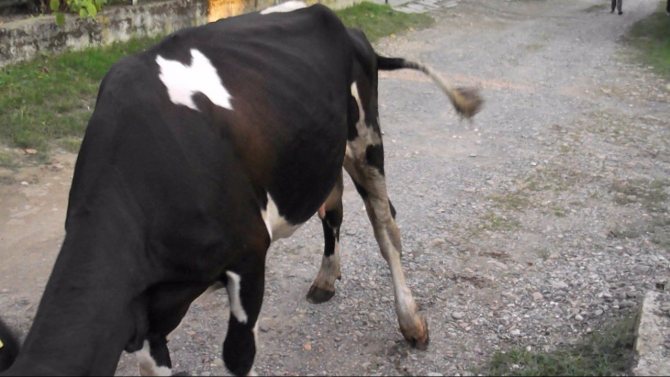

It is definitely worth sounding the alarm if the cow has at least one of the following conditions: swelling, a change in the shape of the joints, a sharp increase in body temperature, the occurrence of severe pain when touched, limping on one leg while walking, a constant desire to assume a recumbent position.
Treatment of joint diseases in cows should be prescribed by a specialist. Taking into account the specific clinical picture, the animals are most often prescribed: rest, massage with special irritating ointments, daily consumption of alfalfa, irradiation with ultrasonic waves (especially important for treatment in winter). In order for joint diseases to bother cows as rarely as possible, it is recommended to keep them in warm rooms with sufficient ventilation, and also not to neglect regular inspections of animals in the herd.
- Lameness.
Lameness of cows can be the result of non-observance of sanitary rules for keeping animals, the issuance of low-quality or unbalanced feed, as well as occur as a result of the transferred infectious and non-infectious diseases. It sometimes affects cows that regularly spend time on improperly formed bedding. Lameness is dangerous because the neglected form of this disease can lead to the development of another disease - mastitis.
Lameness in cows is usually treated with antibiotics. To cope with hoof disease, special baths and rubbing the limbs with an antibiotic, which is produced in the form of a spray, help.
The latest discovery in the treatment of lameness in cows is the specially developed Kovex system. It is a foamy composition that helps not only to heal the disease, but also to protect the hooves from other infections. Maintaining proper sanitary conditions, timely hoof trimming, and limb baths (if necessary) will help to avoid the development of lameness in cattle.
- Strawberry disease.
Despite the beautiful name, this hoof disease can cause significant discomfort to the wards of farms. The characteristic signs of the onset of strawberry disease are changes in the state of the skin in the area of the slit or diadem of the hoof. The skin in these areas turns red and becomes covered with small bumps.


If you detect this disease in time and begin to take care of the sick animal, then the disease will gradually recede without medical intervention. In addition, the small number of vaccines on the market today cannot be called highly effective in combating this problem. The best prevention of the onset and development of strawberry disease is the systematic maintenance of the cleanliness of cow hooves.
- Bruises.
A bruised joint in cows will help to recognize the following signs: change in shape, the occurrence of pain as a result of touch or pressure, swelling, and a general deterioration in the health of the animal. A bruise is damage to tissue with a blunt object without compromising the integrity of the skin.
A joint injury can be obtained directly or indirectly. In the first case, the animal's joint is injured as a result of any impact (on the horns of other animals in the herd, a wall, a fence, etc.), and in the second, a joint injury occurs due to the pressure of the cow's body weight on it during a fall or stumble.
A bruise can be accompanied by damage to muscles, ligaments, tendons, and blood vessels.If the cow does not have chronic joint diseases (for example, arthritis), then the bruise should heal quickly enough. The first few days, cold is applied to the damaged area and novocaine is injected for pain relief.
Further therapy may include the application of warming compresses and a variety of wraps. The most effective means in the fight against this ailment are: irradiation with a special Sollux lamp, the use of rheopirin and massage. If a hemorrhage occurs as a result of a bruise, the animal is prescribed antibiotics (streptomycin, kanamycin, etc.).
For the prevention of bruises, it is recommended to carefully monitor the cleanliness of the stall and the area where the herd grazes.
- Corolla phlegmon.
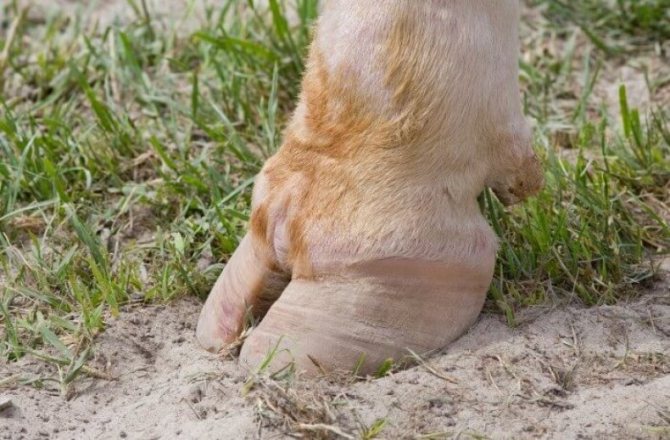

This disease is accompanied by purulent inflammation of the cellulose, which is located under the base of the corolla skin. This disease of the hoof in cows occurs as a result of abrasions and bruises on the corolla. Symptoms of phlegmon include: deterioration in general health, decreased appetite, decreased milk production, increased body temperature, and swelling in the interdigital fissure. When a disease is detected, the cow is stopped grazing and is placed in a special containment area with soft bedding. For the purpose of anesthesia, the animal is prescribed novocaine, and antibiotics are prescribed to suppress the focus of infection. In some cases, novocaine and an antibiotic are injected into the retina above the interdigital cleft.
Recommended articles to read:
- How to save on feed and get high growth
- Production of feed additives: everything you wanted to know about it
- Feeding cattle: how to choose the right diet
Applying compresses with camphor alcohol or alcohol-ichthyol dressings will also help cope with the disease. In cases where the course of the disease is accompanied by the emergence of foci of abscess formation, it is necessary to open the latter. After that, the open wound is washed with disinfectant solutions and Vishnevsky, Konkov ointment or a powder consisting of antibiotics or sulfonamides is applied. The issuance of vitamin complexes prescribed by a veterinarian helps to speed up the recovery of animals, and also helps prevent the development of such hoof diseases in the future.
- Aseptic inflammation.
Aseptic inflammatory process can develop in cows after receiving dislocations, bruises, sprains and other damage to the joints. Animals suffering from rheumatism or rickets are also susceptible to the disease in question. The characteristic signs of the disease are: limping while walking, fever, slight swelling and pain in the area of the affected joint. All of these symptoms give the cow discomfort, which is why the animal quickly gets tired.
If the disease proceeds in an acute form, then with timely and competent treatment, the cow has every chance of a complete recovery, but in the chronic course of the disease, no veterinarian will give such favorable forecasts.
In the first days of treatment, the site of inflammation is cooled and a pressure bandage is applied to the joint. Further therapy consists in the use of warming compresses, wrapping, rubbing the sore spot with camphor or ichthyol ointment, as well as massaging the affected area.
Hydrocortisone is an effective means of combating this ailment. The drug is administered intravenously in combination with novocaine and other medications prescribed by a veterinarian. In some cases, proteolytic and antihistamines are used to treat aseptic inflammation.
- Laminitis.
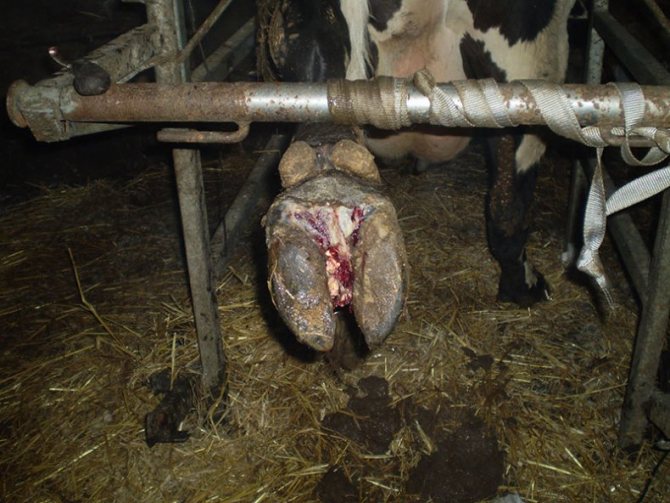

The most common reasons for the development of laminitis are errors in the preparation of the diet of cows and violation of their conditions. It can also be triggered by difficult labor.Abrupt feed changes are another factor that can lead to the development of laminitis, as the stomach of some animals cannot quickly get used to the new food.
The symptoms of hoof disease in the cows shown in the photo above are: lameness on one leg while walking, difficulty in moving from place to place, as well as peeling of the horny tissue of the hooves (with a severe course of the disease), due to which the hooves begin to grow up ...
Treatment of laminitis consists of applying cold clay (applied to the affected hooves), observing drinking restrictions, and replacing industrial feed with high quality hay. In some cases, animals are prescribed antihistamines (diphenhydramine or its analogs), as well as injections with novocaine and calcium chloride.
- Erosion.
As we mentioned in the article, cow hooves are made up of two halves. As a result of erosion, parts of the hoof stop their simultaneous development, therefore, this disease causes considerable discomfort to the animal when walking.
Hoof erosion in cows is easy to recognize independently: the outer part of the hoof looks larger than the inner one, it is difficult for the animal to distribute its body weight, damage to soft tissues and suppuration (in some cases) is visualized. To treat the disease, special heels are attached to the hooves of cows, which allow to evenly distribute the weight of the animals when walking. Thanks to such devices, healthy limbs experience less stress during movement.
Symptoms
After the penetration of the causative agent into the tissues of the limb of the cow, no more than 6 days pass before the onset of symptoms. At the initial stage of the disease in animals, the following signs of the disease are observed:


Hoof rot symptoms
- The cow limps, lags behind the herd.
- On examination of the hoof, slight reddening of the skin of the interdigital cleft, swelling in this area, and the formation of a viscous gray exudate are noted.
- When the inflammation intensifies, a putrefactive process begins, the animal cannot step on the sore hoof, but keeps the limb suspended or prefers to lie down.
- Detachment of the soft tissue of the hoof from the horn shoe.
- Hair loss on the lower part of the affected limb.
- An increase in temperature up to 40.5 degrees (noted with a severe course of the disease).
- Reduced milk yield.
- Exhaustion.
Attention! If you do not help the cow, tissue necrosis begins, the inflammation spreads to the ligaments, tendons, in the future, abscesses, fistulas, and infection of other organs are possible. If veterinary care is not provided, animals die from sepsis.
Prevention of hoof diseases in cows
External conditions
In order for hoof diseases not to darken the life of the animals under guardianship, you need to carefully monitor the condition of the hoof horn and create optimal conditions for its growth. In addition, it should be part of your job to control the safe movement of cows around the area to avoid damage to hooves and joints.
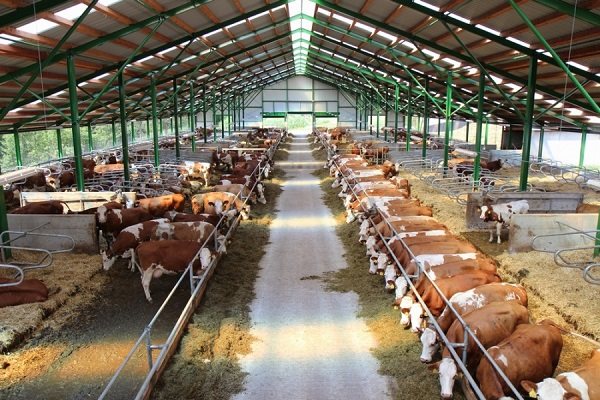

As follows from the above, a number of hoof diseases in cows are caused by dietary errors. Full and balanced feeding of animals will saturate the body of cattle with fiber, vitamins, macro- and microelements. Do not forget that it is these valuable substances that not only strengthen the immune system of cows, but also improve the condition of the skin of the legs and hoof horn.
Since cows are kept indoors during the winter months, care must be taken to ensure that the floors on the farm meet all safety requirements. The flooring must be level, but the slurry must not accumulate on the floor in large quantities. It is also worth paying attention to elements that can cause injury to animals (crevices, sharp edges, wobbly boards, etc.). They definitely need to be repaired and repaired.All areas of the running and walking of animals, as well as pastures should be cleared of foreign objects and debris.
Another important factor affecting the health of cows' hooves is the moisture level in the area where the animals are kept. Untimely cleaning of manure in the room, as well as inadequate ventilation, can lead to an increase in the moisture content of the hoof horn.
Wet horn is easy to wipe off and is characterized by low resistance to mechanical damage. However, excessive dryness is also abnormal as the horn becomes brittle and begins to break. That is why it is necessary to carefully monitor the humidity in the place where animals are kept.
Correct growth and uniform erasure of horny tissue is possible only with regular walking of cows. The stress on the hooves during walks improves the resistance of the hoof horn to various injuries, and also promotes timely renewal of the horny tissue.
Needless to say, timely treatment of hoof diseases in cows significantly increases the chances of a favorable outcome of the disease. Therefore, all animals should be examined regularly and special attention should be paid to animals with lameness, movement difficulties or injuries.
Cow foot baths
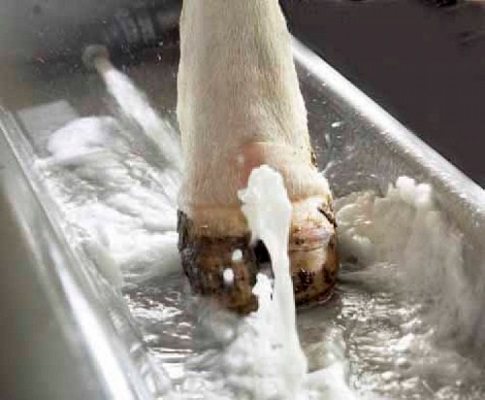

Baths with disinfectant solutions are an excellent prevention of hoof diseases in cows. The drug is chosen only after consulting a veterinarian, since each remedy is aimed at combating a specific problem and preventing diseases of a certain group.
Thus, copper sulfate is an effective means of combating bacteria that cause digital (hoof) dermatitis. And zinc sulfate helps to thicken the hoof horn tissue (it is worth noting that these drugs are perfectly combined with each other).
With massive lesions of hooves, as well as in order to prevent severe complications of infectious diseases, cows need to do foot baths with a solution of copper sulfate (10%) or formalin solution (5-10%).
Please note that animals must walk through the curative bath with clean hooves. You can use a hose to rinse the cows' feet or guide them through tubs of plain water and straw.
The depth of the foot baths should allow the hoof to be submerged in the water up to the arch of the interdigital cleft.
Lameness
A limp in cattle occurs if the individual has fallen, as well as due to a violation of the diet, poor conditions of detention and complications after illness. If the cow has been on an uncomfortable floor or hard bed for a long time, then she will begin to limp.


Lameness in a cow occurs if she falls, as well as due to a violation of the diet
Treatment
Treatment for lameness is simple. The hooves are treated with an antibiotic or antiseptic baths are used.
Lameness in a cow isn't just due to hoof disease. Often the animal is limping due to unhealthy joints. The list of abnormalities is long: diseases of arthritis, arthrosis, dislocated or stretched ligaments. Sometimes sore joints provoke contagious infections.
One of them is bovine brucellosis. In this case, it is not only the limbs that hurt the cattle. Cows give birth to premature calves, miscarriages, uterine prolapse occur. But now veterinarians know exactly the cause of the disease and the methods of its treatment. This infection is contagious and can be transmitted to humans. Quarantine in case of brucellosis is mandatory.
Where to buy quality feed for the prevention of hoof disease in cows
You can buy high-quality premixes and feed additives for all types of animals in Russia from the developer and.
Vitasol - it's reliable! Conveniently! Professionally!
At present JSC "Vitasol" has modern production facilities and scientific potential that can satisfy the needs of any buyer - from a person who keeps a cat or dog at home,to the largest poultry and livestock complexes. Scientific developments of our company in the field of animal and bird nutrition have been repeatedly awarded with medals of the All-Russian Exhibition Center and are in high demand in practical animal husbandry.
Our products contribute to:
- Improving digestion and absorption of feed.
- Increasing the fertility of animals.
- Increase the safety of young animals.
- Increase in weight gain by 10-15%.
- Reduction of feed consumption per unit of production by 5-10%.
- Reducing the incidence of animal diseases.
- Increase the safety of the adult livestock by 4–8%.
Hoof rot diagnostics
After the first symptoms of hoof rot appear, isolate the cow from the rest of the livestock and call a veterinarian.
The disease is diagnosed by the following methods:
- Inspection. Hoof rot has a characteristic clinical picture that is difficult to confuse with other infections.
- Microscopic examination. The material for analysis is scraping from a diseased hoof.
- Blood test. They do not always take it. Helps to find out the stage of the disease and the presence of complications.
Bacteriological analysis allows you to establish an accurate diagnosis and prescribe adequate treatment. If you do not take action, this will affect the quality of life of animals, in especially difficult cases it can even lead to death.



